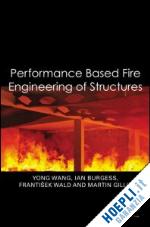Introduction to Fire Safety Engineering and the Role of Structural Fire EngineeringIntroduction to fire engineeringRoles of structural fire resistanceThe process of performance-based fire engineering of structuresIntroduction to the book Recent Major Structural Fire Events and Their ImplicationsIntroductionBroadgate fire, London, 1990Cardington fire research programme, 1994–2003World Trade Center collapses, 11 September 2001Windsor Tower fire, Madrid, 12 February 2005Summary and context of this book Introduction to Enclosure Fire DynamicsIntroductionStandard firesFires in small compartmentsFires in large compartments and travelling firesComputer models of compartment fires Heat TransferIntroductionBasics of heat transferConvective heat transfer coefficientsRadiant heat transfer coefficientSome simplified solutions for heat transferImportance of using appropriate thermal properties of materialsEffects of thermal boundary conditionsBrief introduction to numerical analysis of heat transferConcluding remarks Material PropertiesIntroductionStructural materialsFire protection materialsConcluding remarks Element Structural Fire Resistance DesignDesign principlesConcrete structuresSteel structuresComposite steel and concrete structuresTimber structuresMasonry structuresAluminium structuresFire resistance design worked examples Global Modelling of Structures in FireIntroductionNature of global structural behaviour in fireAnalytical methods for structures in firePractical modelling techniques Steel and Composite JointsIntroductionTypical joints at ambient temperature and in fireCurrent designDevelopment of performance-based approaches Integrity of CompartmentationIntroductionIssues affecting internal wallsDesign of slabs for integrity in fire Robustness of Structures in FireIntroductionCauses of fire-induced disproportionate collapseDesign strategiesCatenary actionRequirements for connectionsOther considerationsSummary The Practical Application of Structural Fire Engineering for a Retail Development in the United KingdomIntroductionMethodologyDesign firesAcceptance criteriaFinite element analysesSteel beam connectionsSimplified methodsComparison between Vulcan and simplified methodsConclusions References












